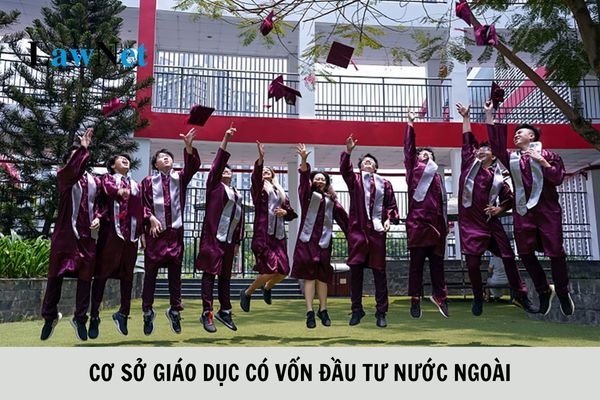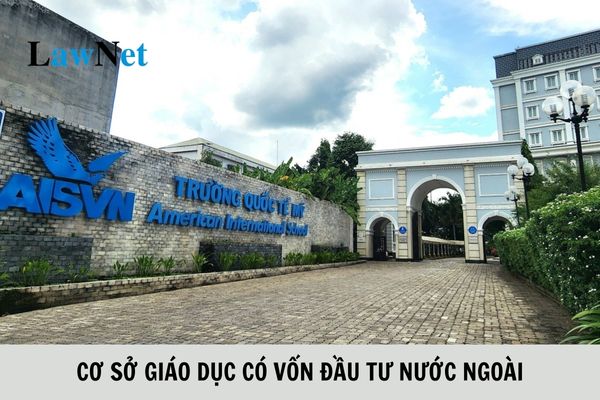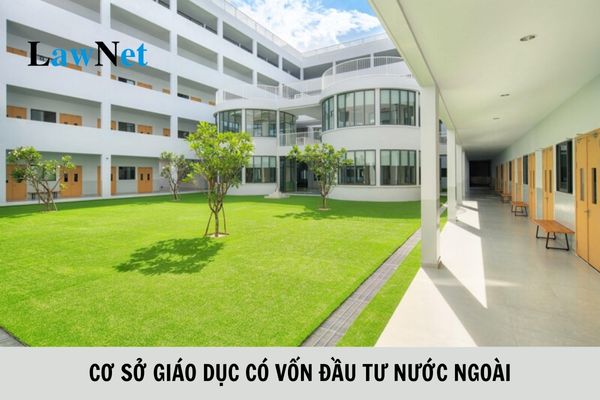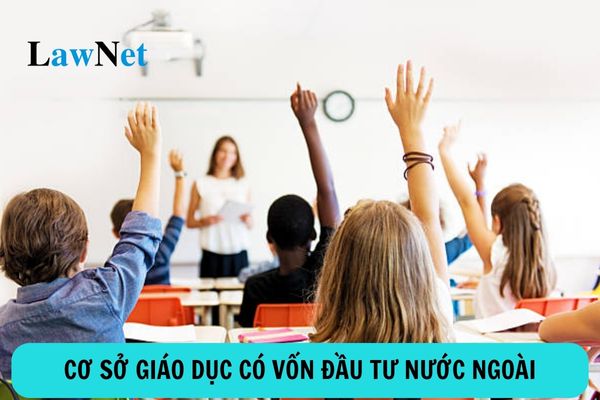What are conditions for facilities and equipment of foreign-invested educational institutions in Vietnam?
What are conditions for facilities and equipment of foreign-invested educational institutions in Vietnam?
According to Article 36 Decree 86/2018/ND-CP, the conditions for facilities and equipment of foreign-invested institutions in Vietnam are as follows:
(1). For short-term training and retraining institutions:
- Classrooms must meet standards for lighting, desks, chairs, equipment, and teaching aids;
- The area used for studying and teaching must ensure an average of at least 2.5 m² per learner for short-term training and retraining institutions;
- There must be offices for the board of directors, leaders, teacher rooms, libraries, and other functional rooms.
(2). For preschool education institutions:
- Schools must be concentrated in one location, with a good environment. The school construction area should be determined based on the number of classes and students, with an average of at least 8 m² per child in urban and district-level towns and 12 m² per child in rural areas;
- Classrooms and sleeping rooms for children and other functional rooms must be appropriate in terms of space, lighting, desks, chairs, equipment, and childcare and educational tools;
- There must be offices for the school, the principal’s office, administrative management rooms, healthcare rooms, security rooms, and staff rooms that are appropriate in size, equipment, and materials for management, childcare, nurturing, and educating children;
- There must be a clean water system, a drainage system, appropriate restrooms with safe and clean sanitary equipment, meeting all the school’s daily needs;
- The school kitchen should be organized according to a one-way process with appropriate equipment and utensils, ensuring food hygiene and safety if the school offers meals for children;
- There must be a playground, surrounding fences, a school gate with the school nameplate as specified in Article 29 Decree 86/2018/ND-CP;
- There should be green trees within the school area. All designs, construction, equipment, utensils, and toys must ensure absolute safety for the children.
(3). For general education institutions:
- Schools must be concentrated in one location, with good environment. The school construction area should be determined based on the number of classes and students, and regional characteristics, with an average of at least 6 m² per student in urban and district-level towns and 10 m² per student in rural areas;
- The area used for studying and teaching must ensure an average of at least 2.5 m² per student;
- There must be offices for the school, the principal's office, teacher rooms, and meeting rooms appropriate for the school’s needs;
- There must be subject-specific classrooms (for lower and upper secondary schools), libraries, desks, chairs, equipment, and teaching aids meeting current standards set by the Ministry of Education and Training;
- There must be multipurpose gyms, arts education rooms, computer rooms, rooms supporting inclusive education for disabled students, and school healthcare rooms. There should also be dining rooms and resting rooms for semi-boarding schools;
- There must be a clean water system, restrooms appropriate to the size of the educational institution, ensuring conditions meet current standards set by the Ministry of Education and Training;
- There must be playgrounds, sports fields, parking areas with a total space of at least 30% of the school's total area. There must be surrounding fences and a school gate with a nameplate as specified in Article 29 Decree 86/2018/ND-CP.
(4). For higher education institutions and branches of foreign-invested higher education institutions in Vietnam:
- The land area for school construction must average at least 25 m² per student at the time of maximum training scale in the school's development plan;
- The building area must average at least 9 m² per student, including at least 6 m² for learning space and at least 3 m² for housing and living space;
- There must be sufficient lecture halls, classrooms, and functional rooms appropriate for and meeting the training requirements of different disciplines and training forms;
- There must be sufficient working spaces, administrative areas, and offices ensuring that the structure of offices, faculties, and specialized departments is maintained, ensuring at least 8 m² per person;
- There must be an auditorium, library, laboratories, practice, and practical facilities, and other facilities meeting the training program and scientific-technology activities requirements;
- There must be dining facilities, recreation, sports, cultural buildings, and medical and service facilities to serve the staff, faculty, and students;
- There must be technical facilities, parking spaces for cars, motorbikes, and bicycles.
(5). Renting facilities:
Foreign-invested educational institutions are allowed to rent facilities on a stable cycle of at least 5 years and must ensure that the facilities meet the regulations specified in Clauses 1, 2, 3, and 4 Article 36 Decree 86/2018/ND-CP.

What are conditions for facilities and equipment of foreign-invested educational institutions in Vietnam? (Image from the Internet)
What are the conditions for teachers at foreign-invested educational institutions in Vietnam?
According to Article 38 Decree 86/2018/ND-CP, the conditions for teachers at foreign-invested educational institutions are as follows:
(1). For short-term training and retraining institutions:
- Teachers must at least have college-level qualifications or equivalent, in fields relevant to their teaching assignments;
- The maximum teacher-student ratio is 1 teacher per 25 students.
(2). For preschool education institutions:
- Teachers must at least have early childhood education college-level qualifications or equivalent;
- The maximum number of children per group or class is stipulated as follows:
For children in nursery school:
+ Children aged 3 - 12 months: 15 children per group;
+ Children aged 13 - 24 months: 20 children per group;
+ Children aged 25 - 36 months: 25 children per group.
For children in kindergarten:
+ Children aged 3 - 4 years: 25 children per class;
+ Children aged 4 - 5 years: 30 children per class;
+ Children aged 5 - 6 years: 35 children per class.
- The number of teachers per group or class is stipulated as follows:
+ For nursery school children: 5 children per teacher;
+ For kindergarten children: 10 - 12 children per teacher.
(3). For general education institutions:
- Teachers must at least have university-level education qualifications or equivalent;
- The minimum number of teachers must ensure a ratio of 1.5 teachers per class for primary schools, 1.95 teachers per class for lower secondary schools, and 2.25 teachers per class for upper secondary schools;
- The number of students per class must not exceed 30 students for primary schools, 35 students per class for lower and upper secondary schools.
(4). For higher education institutions:
- Faculty members must at least hold a master’s degree, where the ratio of faculty members with doctoral degrees should be no less than 50% of the total number of faculty members, except for certain specialized fields as decided by the Minister of Education and Training;
- The maximum student-faculty ratio is 10 students per faculty member for talent training programs, 15 students per faculty member for science, engineering, and technology programs, and 25 students per faculty member for social sciences, humanities, economics, and business administration programs;
- The institution must have enough permanent faculty members to handle at least 60% of the curriculum of each training program;
- Foreign faculty members teaching at foreign-invested higher education institutions must have university teaching experience in the same field, except as stipulated in point e, clause 4, Article 38 Decree 86/2018/ND-CP;
- Native foreign faculty members teaching foreign language skills at higher education institutions must have at least a bachelor's degree and an appropriate teaching certificate.
What are the conditions for educational programs of foreign-invested educational institutions in Vietnam?
According to Article 37 Decree 86/2018/ND-CP, the conditions for educational programs of foreign-invested educational institutions are as follows:
The educational program implemented at foreign-invested educational institutions must reflect educational objectives and not include content harmful to national defense, national security, or community interests; must not propagate religion, distort history, negatively affect Vietnamese culture, ethics, and customs; and must ensure linkages between educational levels and training degrees.
Foreign-invested educational institutions are allowed to teach:
- Vietnam’s educational program as regulated by Vietnamese law;
- Preschool education and general education programs of foreign countries for institutions as stipulated in clauses 2 and 3, Article 28 Decree 86/2018/ND-CP;
- Short-term training and retraining programs from foreign countries; undergraduate, master's, and doctoral programs within the framework of foreign training collaborations.




- What is the sample analysis of the Character "Mother Le" in "Nhà mẹ Lê"? What are the learning rights and obligations of 10th-grade students in Vietnam?
- Vietnam: What is the brief summary of the resistance against the Mongol-Yuan invasions? What are the conditions for 7th-grade students to be eligible for grade advancement?
- Vietnam: What are the top 3 sample social argumentative essays on perseverance as the key to success? What learning outcomes are required for writing content in the 7th-grade Literature curriculum?
- Vietnam: What are the sample descriptive essays on a favorite toy for 5th-grade students? What are the assessment criteria for 5th-grade students?
- Vietnam: What are the sample brief paragraphs showing the feeling for the Poem "Gặp lá cơm nếp"? What are the regulations on periodic assessment for 7th-grade students?
- Vietnam: What is the sample outline of an essay on recounting the story "The Legend of the Foeniculum Vulgare" for 5th-grade students? What types of essays are 5th-grade students required to be able to write?
- Vietnam: What are the guidelines for preparing a brief outline for an essay on retelling an experience for 4th-grade students? What learning outcomes are required for writing practice in the 4th-grade Vietnamese language curriculum?
- Vietnam: What are the sample 15 sample descriptive paragraphs on your house for 3rd-grade students? How many lessons are allocated for writing content in the 3rd-grade Vietnamese language curriculum?
- Vietnam: What are the guidelines for preparing the brief lesson "Giọt sương đêm" for 6th-grade students? What are the competency requirements in literature for 6th-grade students?
- What are the sample essays on sharing an experience with a family member for 6th-grade students in Vietnam? What elective subjects do 6th-grade students learn?

